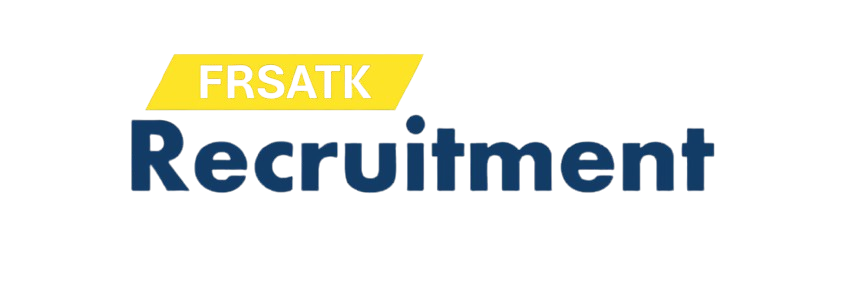5 Common Recruitment Mistakes and How to Avoid Them
- August 4, 2025
- Posted by: Abdulrahman
- Category: Recruitment

Recruiting the right talent is both an art and a science. In today’s competitive business landscape especially in the UAE where diversity, Emiratization mandates, and rapid innovation shape the HR environment companies must recruit smarter. Yet many organizations still fall victim to common recruitment mistakes that cost time, money, and ultimately, top talent.
Whether you’re a seasoned HR professional or new to the recruitment game, avoiding these five mistakes can significantly improve your hiring success and elevate your company’s workforce.
1. Vague or Overcomplicated Job Descriptions
The Mistake:
Job descriptions that are either too generic or unnecessarily complicated are a major turn-off for potential candidates. Often, hiring managers fall into the trap of copying and pasting templates without customizing them to reflect the actual needs of the role. This leads to confusion, unqualified applicants, or worse missed opportunities with great candidates who didn’t see a fit.
Why It Hurts:
Candidates use job descriptions to assess whether they are a match. If they can’t visualize themselves in the role or understand what’s expected, they’re unlikely to apply. A poor job description sets the wrong tone for your employer brand and can make your company appear disorganized.
How to Avoid It:
- Write clear, concise, and realistic descriptions.
- Focus on outcomes rather than only responsibilities.
- Separate must-have qualifications from nice-to-haves.
- Use inclusive and engaging language that speaks to the ideal candidate.
- Always include a brief paragraph about your company culture.
2. Neglecting Employer Branding
The Mistake:
Many HR teams focus solely on job postings without considering how their employer brand appears to candidates. In the UAE where top talents are constantly being approached by competitors your company’s reputation and visibility matter more than ever.
Why It Hurts:
Today’s candidates research your company before applying. If your LinkedIn, website, or social media pages are outdated, dull, or missing key information about your work culture, you’re likely losing quality applicants.
How to Avoid It:
- Maintain a strong LinkedIn presence with employee stories, updates, and job posts.
- Create a dedicated careers page that reflects your values, team, and perks.
- Use video testimonials or a day in the life features to show the real work environment.
- Encourage employees to share their experiences online as brand ambassadors.
3. Overreliance on Gut Feeling in Interviews
The Mistake:
Relying too much on intuition when making hiring decisions can introduce unconscious bias and lead to inconsistent results. While gut feeling is often trusted by experienced interviewers, it should never replace structured assessments and standardized processes.
Why It Hurts:
Bias in recruitment whether cultural, educational, or personality-based can lead to poor hiring decisions, lower diversity, and weaker team performance. In the UAE, where multicultural teams are the norm, objectivity is essential.
How to Avoid It:
- Use structured interviews with standardized questions for all candidates.
- Implement scoring systems based on skill relevance and behavioral indicators.
- Incorporate psychometric assessments to evaluate cognitive and personality traits.
- Train interviewers on unconscious bias and inclusive hiring practices.
4. Ignoring Candidate Experience
The Mistake:
Many companies unintentionally create a frustrating experience for applicants—from clunky application forms and slow communication to long interview processes and lack of feedback.
Why It Hurts:
A poor candidate experience not only deters top talent but also damages your employer reputation. Candidates are increasingly vocal on platforms like Glassdoor or Google Reviews. In the UAE’s tight-knit professional circles, word spreads fast.
How to Avoid It:
- Simplify the application process ideally no more than two steps.
- Acknowledge every application with an automated response.
- Keep candidates updated at every stage and offer constructive feedback when possible.
- Respect candidates’ time by sticking to agreed interview slots and avoiding delays.
- After the process, send a thank-you email even to rejected candidates.
5. Failing to Use Data and Technology
The Mistake:
Some HR departments still rely on outdated spreadsheets or informal methods to track applicants, rather than leveraging recruitment technology and analytics.
Why It Hurts:
Without data, it’s difficult to identify what’s working or what’s failing in your recruitment funnel. Manual processes also make it harder to scale hiring efforts and can introduce errors and inefficiencies.
How to Avoid It:
- Use an Applicant Tracking System (ATS) to manage and track candidate pipelines.
- Analyze metrics like time-to-hire, cost-per-hire, and source of hire regularly.
- Integrate tools for video interviews, skills testing, and automated scheduling.
- Embrace AI-based sourcing tools to find and engage top candidates faster.
Bonus Tip: Not Considering Long-Term Fit
The Mistake:
Hiring for immediate needs without evaluating the long-term potential and alignment of the candidate with your company’s vision.
Why It Hurts:
Quick hires may fill an urgent gap, but if the person lacks alignment with company goals or doesn’t see a future with you, they’re likely to leave within a short time.
How to Avoid It:
- During interviews, ask about career goals and future aspirations.
- Share your company’s growth plans and see if they align with the candidate’s expectations.
- Use personality and value-based assessments to predict cultural fit and long-term retention.
Final Thoughts
Recruitment is a strategic function that directly impacts business performance. While it’s easy to fall into traps like poor job descriptions, biased interviews, or ignoring candidate experience, being proactive can prevent costly hiring mistakes.
By focusing on clarity, consistency, candidate care, and technology especially within the dynamic and multicultural context of the UAE you can transform your recruitment process from reactive to results driven.

